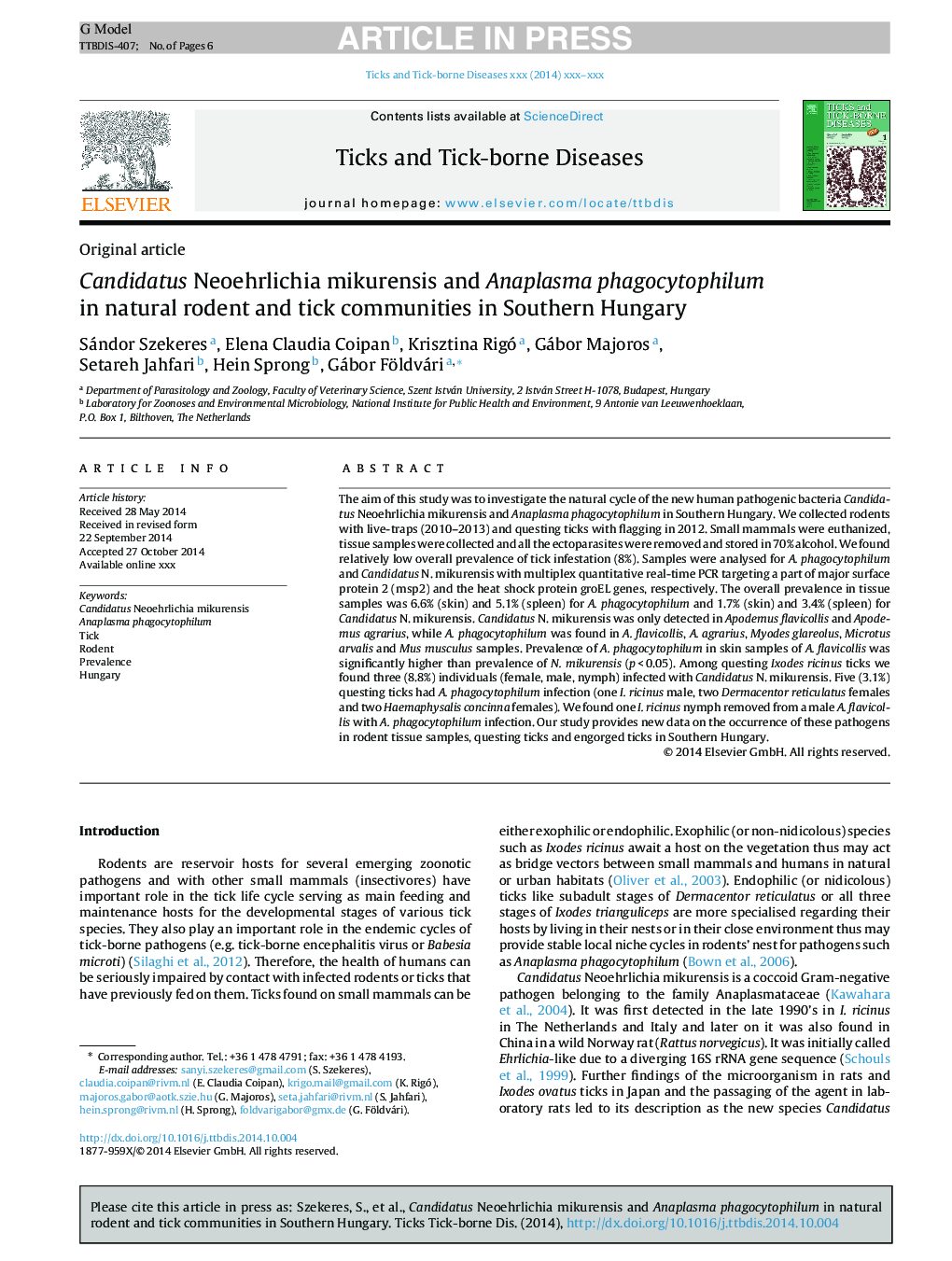| Article ID | Journal | Published Year | Pages | File Type |
|---|---|---|---|---|
| 5807077 | Ticks and Tick-borne Diseases | 2015 | 6 Pages |
Abstract
The aim of this study was to investigate the natural cycle of the new human pathogenic bacteria Candidatus Neoehrlichia mikurensis and Anaplasma phagocytophilum in Southern Hungary. We collected rodents with live-traps (2010-2013) and questing ticks with flagging in 2012. Small mammals were euthanized, tissue samples were collected and all the ectoparasites were removed and stored in 70% alcohol. We found relatively low overall prevalence of tick infestation (8%). Samples were analysed for A. phagocytophilum and Candidatus N. mikurensis with multiplex quantitative real-time PCR targeting a part of major surface protein 2 (msp2) and the heat shock protein groEL genes, respectively. The overall prevalence in tissue samples was 6.6% (skin) and 5.1% (spleen) for A. phagocytophilum and 1.7% (skin) and 3.4% (spleen) for Candidatus N. mikurensis. Candidatus N. mikurensis was only detected in Apodemus flavicollis and Apodemus agrarius, while A. phagocytophilum was found in A. flavicollis, A. agrarius, Myodes glareolus, Microtus arvalis and Mus musculus samples. Prevalence of A. phagocytophilum in skin samples of A. flavicollis was significantly higher than prevalence of N. mikurensis (p < 0.05). Among questing Ixodes ricinus ticks we found three (8.8%) individuals (female, male, nymph) infected with Candidatus N. mikurensis. Five (3.1%) questing ticks had A. phagocytophilum infection (one I. ricinus male, two Dermacentor reticulatus females and two Haemaphysalis concinna females). We found one I. ricinus nymph removed from a male A. flavicollis with A. phagocytophilum infection. Our study provides new data on the occurrence of these pathogens in rodent tissue samples, questing ticks and engorged ticks in Southern Hungary.
Related Topics
Life Sciences
Agricultural and Biological Sciences
Animal Science and Zoology
Authors
Sándor Szekeres, Elena Claudia Coipan, Krisztina Rigó, Gábor Majoros, Setareh Jahfari, Hein Sprong, Gábor Földvári,
